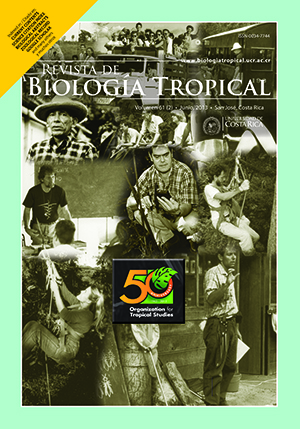Abstract
Azadirachta indica is a tree species which use is steadily increasing for restoration of tropical and subtropical arid and degraded lands throughout the world. The objective of this research study was to evaluate the potential of these plantations as an active restoration model for the recovery of soils under desertification in arid lands of Colombia. Litter traps and litter-bags were installed in twenty 250m2 plots. Green leaves and soil samples inside and outside this species plantations were taken, and their elemental concentrations were determined. Litterfall, leaf litter decomposition and foliar nutrient resorption were monitored for one year. The annual contributions of organic material, such as fine litterfall, represented 557.54kg/ha, a third of which was A. indica leaves. The greatest potential returns of nutrients per foliar litterfall were from Ca (4.6kg/ha) and N (2.4kg/ha), and the smallest potential returns came from P (0.06kg/ha). A total of 68% of the foliar material deposited in litter-bags disappeared after one year. The greatest release of nutrients was that of K (100%), and the least was that of N (40%). P was the most limiting nutrient, with low edaphic availability and high nutrient use efficiency from Vitousek´s index (IEV=3176) and foliar nutrient resorption (35%). Despite these plantations are young, and that they have not had forestry management practices, as an active restoration model, they have revitalized the biogeochemical cycle, positively modifying the edaphic parameters according to the increases in organic material, P and K of 72%, 31% and 61%, respectively. Furthermore, they improved the stability of aggregates and the microbe respiration rates. The forest plantation model with exotic species has been opposed by different sectors; however, it has been acknowledged that these projects derive many benefits for the restoration of biodiversity and ecosystemic functions. The conditions of severe land degradation demand the initial use of species, such as A. indica, that can adapt quickly and successfully, and progressively reestablish the biogeochemical cycle.Comments
Downloads
Download data is not yet available.






